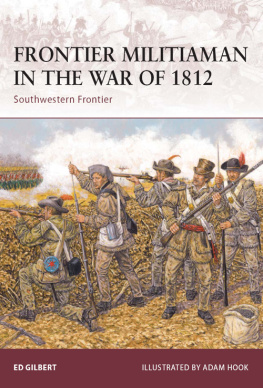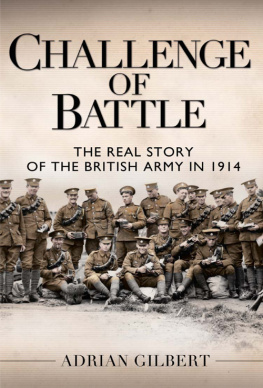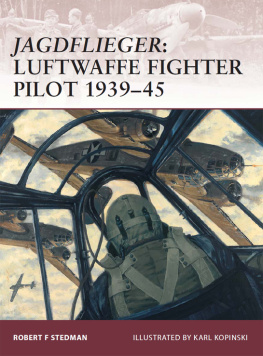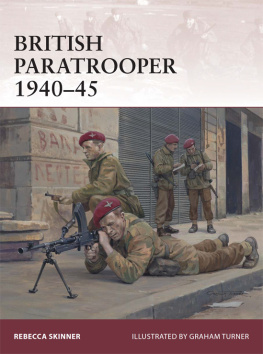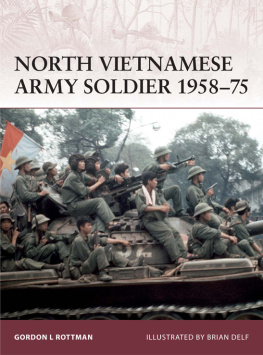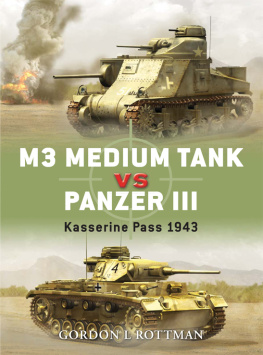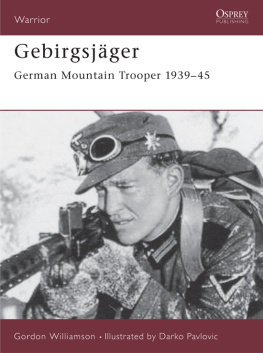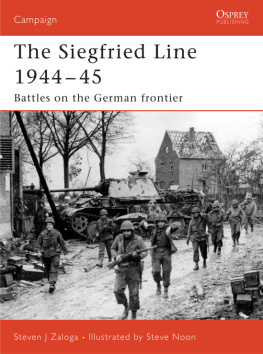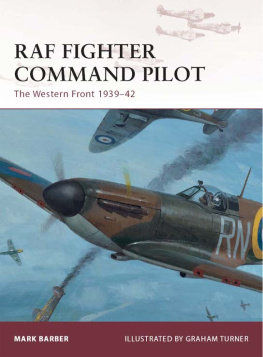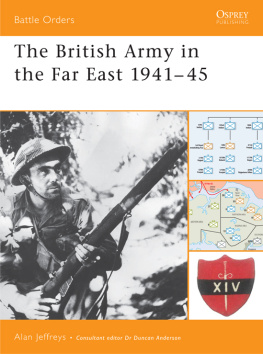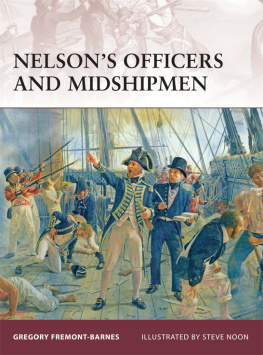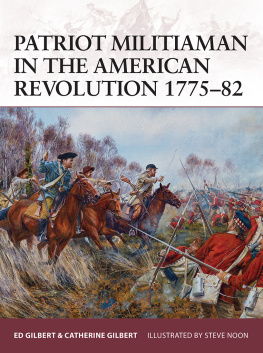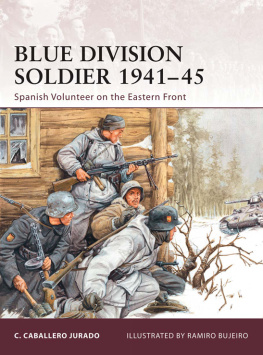Gilbert - Frontier Militiaman in the War of 1812
Here you can read online Gilbert - Frontier Militiaman in the War of 1812 full text of the book (entire story) in english for free. Download pdf and epub, get meaning, cover and reviews about this ebook. year: 2012, publisher: Osprey Publishing, genre: Politics. Description of the work, (preface) as well as reviews are available. Best literature library LitArk.com created for fans of good reading and offers a wide selection of genres:
Romance novel
Science fiction
Adventure
Detective
Science
History
Home and family
Prose
Art
Politics
Computer
Non-fiction
Religion
Business
Children
Humor
Choose a favorite category and find really read worthwhile books. Enjoy immersion in the world of imagination, feel the emotions of the characters or learn something new for yourself, make an fascinating discovery.
Frontier Militiaman in the War of 1812: summary, description and annotation
We offer to read an annotation, description, summary or preface (depends on what the author of the book "Frontier Militiaman in the War of 1812" wrote himself). If you haven't found the necessary information about the book — write in the comments, we will try to find it.
Frontier Militiaman in the War of 1812 — read online for free the complete book (whole text) full work
Below is the text of the book, divided by pages. System saving the place of the last page read, allows you to conveniently read the book "Frontier Militiaman in the War of 1812" online for free, without having to search again every time where you left off. Put a bookmark, and you can go to the page where you finished reading at any time.
Font size:
Interval:
Bookmark:
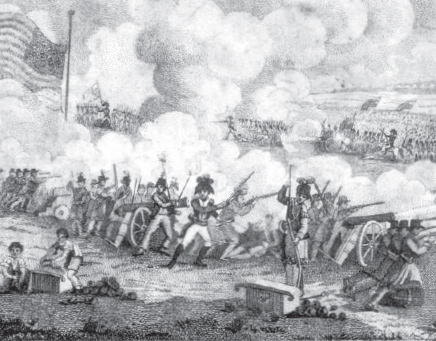
| ED GILBERT | ILLUSTRATED BY ADAM HOOK |
There was a time when I had a choice. I have none, now. Even hope is ended. Once I could animate my warriors, but I cannot animate the dead. William Weatherford (Red Eagle) addressing Andrew Jackson, 1814
State militias conducted most of the military campaigns along the southwestern frontier of the United States between 1813 and 1815. Yet despite their widespread use, few military units have been the subject of so much misconception and outright fantasy. Indeed, this entire theater of war remains one of the least known in American history, although the events of this brief period decided the fate of the new nation.
Many historians treat the southwestern frontier campaigns as a sideshow to the larger War of 1812, yet they had far different stakes. The War of 1812 was largely a maritime war waged to control the eastern seaboard of North America and to determine Americas access to global trade. Secondary land campaigns defined the boundary between the United States and Britains remaining North American colony, Canada.
At stake in the southwestern frontier was the issue of whether the United States could absorb the vast Louisiana Purchase to become a major nation. At the time, Americas western boundary stretched from the Great Lakes to the old French ports of Mobile and New Orleans, but geographic and human obstacles blocked westward expansion.
The grasslands of the Great Plains were then called The Great American Desert, a seemingly empty plain with uncertain water supplies. Commerce and settlement would be funneled along river systems that converged at New Orleans and a secondary port at Mobile. Spain controlled what is now the state of Florida, further blocking expansion.
The human obstacle was the Muscogee, or Creek, Nation in what is now Georgia and Alabama. Commerce and intermarriage had mingled white and Creek cultures, but the Creeks maintained a formidable military reputation from the days when they raided as far north as the Great Lakes.
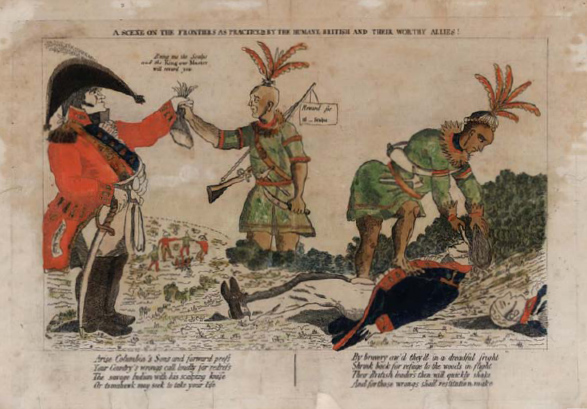
A Scene On The Frontier As Practiced By The Humane British and Their Worthy Allies! British support for warlike tribes along the western and southern frontiers inflamed public opinion, as evidenced by handbills and newspaper editorials. This example shows a British officer offering two Shawnee a reward from their King and Master. (Library of Congress)
The Creeks remained largely neutral in white affairs, playing the colonial powers against each other until the Revolutionary War (177683). Alexander McGillivray (c.175093), raised and educated in white society, led the Creeks to establish a central council that replaced the loose alliance of clans. Under McGillivray affluent Creeks were assimilated into the white culture, living in established towns and villages, farming, and raising livestock.
Other Creeks strove to maintain a traditional way of life, and civil war between the two factions grew into a conflict with the white settlers. The Creek War, or Red Stick War of 181314, destroyed the Creek Nation and opened vast areas to white settlement. It established the reputations of some of the towering figures of American history, including Andrew Jackson, Sam Houston, and Davy Crockett; and was largely fought by a mixture of various militia forces supplemented by regular troops.
Jackson would go on to decisively defeat the might of the British Army using his part time army of militiamen at the battle of New Orleans in 1815, and as President he set the nation on a course of relentless expansion. But it all began with a little-known war in Alabama.
We will follow two fictional characters, Billy McCullough and the Deacon, through the two wars against the Creeks and the British as the militiamen of the southwestern frontier forged a formidable fighting reputation against all expectations. The minor character Joshua is also fictional. Others characters mentioned by name are actual persons, though their exact words are fictional. The reader should be aware that in fact militia units consisted of short-service volunteers, and virtually no one except a few very senior officers served in all the campaigns described here.
The Louisiana Purchase was the acquisition by the United States of 828,000 square miles of French territory, Louisiana, in 1803. It encompassed portions of 15 current US states and two Canadian provinces.
| 1810 | The Federal Road connecting Georgia and Mississippi is opened across Creek (Muscogee) lands in Alabama, leading to a massive influx of white settlers. Not all move into the western Mississippi Territory, and Creek resentment against the settlers grows. |
| 1811 | |
| Spring | The Shawnee chief Tecumseh and his brother the Prophet visit the Choctaw and Creek nations in Alabama in an attempt to foment a tribal rebellion intended to drive out the white settlers. The effort is unsuccessful but Tecumseh lays the foundation for the Creek Red Stick war faction. |
| 181112 | Relations between the United States and Britain deteriorate. Unofficial British agents, mostly traders, attempt to foment unrest among the tribes. |
| 1812 | |
| Spring | A party of Red Sticks returning from Canada murder seven white settlers in the Duck River Valley of Tennessee and carry one captive to the Creek country. The killers are hunted down and killed by Creek agents, leading to further discord. |
| June 18 | The United States declares war on Britain. The southwestern frontier is little affected. |
| 1813 | |
| February | Red Sticks participate in atrocities in the Ohio River Valley. |
| Spring | Civil war breaks out between the Red Stick faction and Creek tribal leadership. |
| July 27 | A party of Mississippi volunteer militia attacks a Red Stick supply train returning from Spanish Pensacola at Burnt Corn Creek, south Alabama. In a chaotic fight, the settlers, though routed, carry off most of the military supplies. Red Stick leaders view this as an act of war. |
| August 30 | White settlers have gathered at local stockades for protection. The Red Sticks plan to attack stockades throughout the Tombigbee River Valley. The only successful attack is at Fort Mims, north of Mobile, Alabama, killing at least 247 men, women, and children (including whites, friendly Creeks, and black slaves). Others are carried into captivity. Greatly exaggerated rumors of the massacre circulate throughout the region. |
| Late October | John Coffees Tennessee Mounted Rifles raid Creek towns in northwestern Alabama. |
| November 3 | Coffees force achieves the first defeat of the Red Sticks at Tallusahatchee, Alabama. |

MISSISSIPPI TERRITORY 1812
The Mississippi Territory included the present stares of Alabama and Mississippi, and the Creek Nation lay generally east of the Tombigbee River, extending into western Georgia, and south into Spanish Florida. Two major routes were opened in an attempt to encourage settlement, the Natchez Trace (primarily a horse path) and the Federal Road, a wagon and mail route. The Federal Road in particular encouraged white settlement on Creek lands.
Font size:
Interval:
Bookmark:
Similar books «Frontier Militiaman in the War of 1812»
Look at similar books to Frontier Militiaman in the War of 1812. We have selected literature similar in name and meaning in the hope of providing readers with more options to find new, interesting, not yet read works.
Discussion, reviews of the book Frontier Militiaman in the War of 1812 and just readers' own opinions. Leave your comments, write what you think about the work, its meaning or the main characters. Specify what exactly you liked and what you didn't like, and why you think so.

